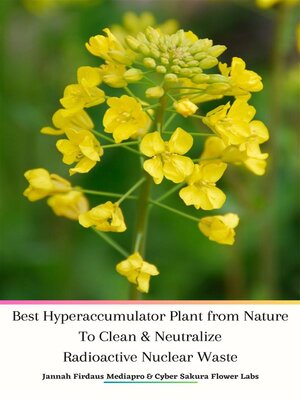Best Hyperaccumulator Plant from Nature to Clean & Neutralize Radioactive Nuclear Waste
ebook
By Jannah Firdaus Mediapro

Sign up to save your library
With an OverDrive account, you can save your favorite libraries for at-a-glance information about availability. Find out more about OverDrive accounts.
Find this title in Libby, the library reading app by OverDrive.



Search for a digital library with this title
Title found at these libraries:
| Loading... |
Hyperaccumulator plants are capable of removing and storing large amounts of radioactive nuclear waste from the environment. These plants are often used in phytoremediation, a process of using plants to remove pollutants from the environment. Examples of hyperaccumulator plants include Sunflower, Thlaspi caerulescens, Pteris vittata, Stanleya pinnata, Vetiveria zizanioides and Euphorbia hirta. These plants have been used in the past to clean up the radioactive isotopes that were released during the Chernobyl Nuclear Power Plant accident in 1986.
Additionally, some species of hyperaccumulator plants, such as Brassica juncea, have been shown to be effective at removing uranium from contaminated soil. Radioactive nuclear waste can be extremely dangerous to both humans and the environment. It has the potential to cause serious health problems and long-term environmental damage. Radioactive Nuclear Waste can contaminate groundwater, soil, and air, and can spread to other areas, potentially causing serious health problems to people who come into contact with it. Radioactive nuclear waste can also have an effect on the environment, harming plants and animals and disrupting ecosystems.
Additionally, some species of hyperaccumulator plants, such as Brassica juncea, have been shown to be effective at removing uranium from contaminated soil. Radioactive nuclear waste can be extremely dangerous to both humans and the environment. It has the potential to cause serious health problems and long-term environmental damage. Radioactive Nuclear Waste can contaminate groundwater, soil, and air, and can spread to other areas, potentially causing serious health problems to people who come into contact with it. Radioactive nuclear waste can also have an effect on the environment, harming plants and animals and disrupting ecosystems.






